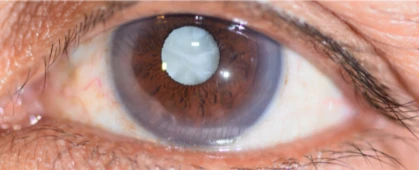The usual corneal shape is almost spherical, however in case of ecstatic disorder, the cornea becomes thinner with protrusion and distortion of the anterior corneal surface, hence disturbance of vision. Depending on the shape the cornea assumes in ectatic disorder, the cornea may be shaped as a cone (Keratoconus), as a large thin cornea (Keratoglobus), or have a peripheral thinning (Pellucid marginal corneal degeneration).




